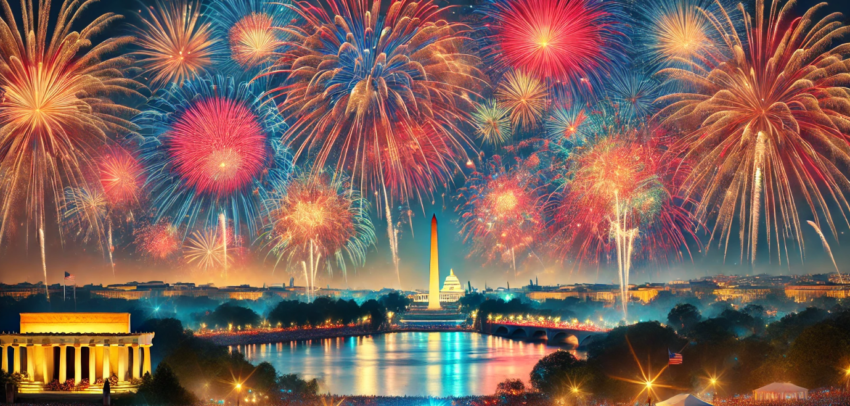| Listen to our audio presentation: Ancient Bond Between Dogs and Humans |
The Fourth of July, also known as Independence Day, is a significant date in American history. It marks the adoption of the Declaration of Independence on July 4, 1776, by the Continental Congress, declaring the thirteen American colonies as free and independent states, no longer under British rule. This day is now celebrated with fireworks, parades, concerts, and various patriotic displays across the United States.
The Road to Independence
The path to independence was fraught with tension and conflict. By the mid-18th century, the American colonies were growing increasingly dissatisfied with British rule. Key issues included taxation without representation, restrictions on westward expansion, and the quartering of British soldiers in colonial homes. These grievances culminated in the outbreak of the American Revolutionary War in April 1775.
Drafting the Declaration
In June 1776, amidst the Revolutionary War, the Continental Congress convened in Philadelphia. A committee consisting of Thomas Jefferson, John Adams, Benjamin Franklin, Roger Sherman, and Robert R. Livingston was tasked with drafting a formal declaration of independence. Thomas Jefferson was the primary author, and his draft eloquently articulated the colonies’ right to self-governance and the inherent rights of individuals.
Adoption of the Declaration
After several days of debate and revisions, the Continental Congress officially adopted the Declaration of Independence on July 4, 1776. The document announced the colonies’ decision to form a new nation and justified the decision by listing grievances against King George III. It also asserted the fundamental principles of equality and the rights to life, liberty, and the pursuit of happiness.
Celebrating Independence
The first celebrations of Independence Day began in 1777, with bonfires, bells, and fireworks becoming part of the tradition. Over the years, the Fourth of July has evolved into a day of national pride and festivity. Communities across the country engage in parades, concerts, and patriotic displays. Fireworks have become synonymous with the holiday, symbolizing the fight for freedom and the joy of independence.
Modern-Day Observances
Today, Independence Day is a federal holiday in the United States, characterized by a range of activities that reflect the nation’s history and heritage. Families and friends gather for barbecues, picnics, and public events. Major cities often host grand fireworks displays, and the National Independence Day Parade in Washington, D.C., is a highlight of the celebrations.
The Significance of the Fourth of July
Independence Day is more than just a celebration of the past; it is a time to reflect on the values that the nation was founded upon. It serves as a reminder of the struggle for freedom and the ongoing quest for equality and justice. The Fourth of July unites Americans in their shared history and aspirations for the future.
Resources
“The Declaration of Independence: A History” – National Archives
“Independence Day: History” – History.com
“American Revolution History” – History.com
“Fourth of July: The History of Independence Day” – Library of Congress

